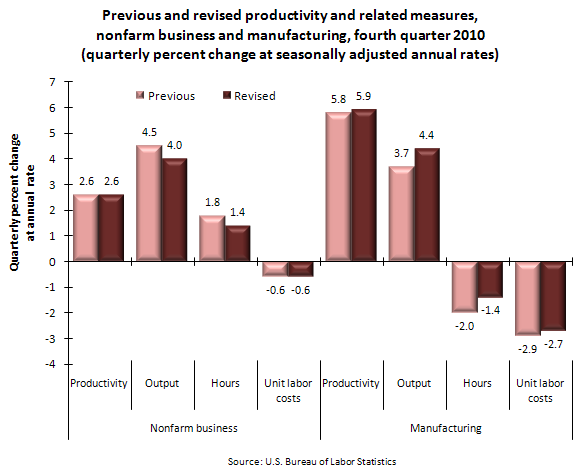Productive Times Call For Human Measures
“When a firm makes a profit this means that productive factors have been properly employed and corresponding human needs have been duly satisfied,” wrote Pope John Paul II in 1991.
The Pope definition of profit opens up an onslaught of questions. What will it look like when productivity is at its height? What will satisfy humans’ needs? What roles do technology and the environment play in this vision of profit?
Nevertheless, U.S. productivity is making the headlines. While employment figures falter, productivity is way up. Will this affect companies’ hiring practices? Will companies decide that they need to hire fewer workers and push their current workforce to continue to produce more and more? Will human need be sacrificed to greed?
Although productivity rose across the nation, workers were not financially compensated for their hard work. The U.S. Bureau of Labor Statistics reports the changes in output per hour from the fourth quarter of 2010.
Nonfarm business sector labor productivity increased at a 2.6 percent annual rate. Output increased 4.0 percent and hours worked increased 1.4 percent. Manufacturing sector productivity rose 5.9 percent, as output increased 4.4 percent and hours worked decreased 1.4 percent.
Unit labor costs—defined as the ratio of hourly compensation to labor productivity—in nonfarm businesses fell 0.6 percent in the fourth quarter of 2010, due to productivity increasing faster than hourly compensation. Unit labor costs in manufacturing declined at a 2.7 percent annual rate in the fourth quarter of 2010.
From the fourth quarter of 2009 to the fourth quarter of 2010, as output rose faster than hours worked, nonfarm business productivity increased 1.9 percent and manufacturing productivity increased 4.2 percent.
Unit labor costs in nonfarm businesses edged down 0.1 percent, from the fourth quarter of 2009 to the fourth quarter of 2010. Over that same period, unit labor costs in manufacturing decreased by 2.7 percent.


